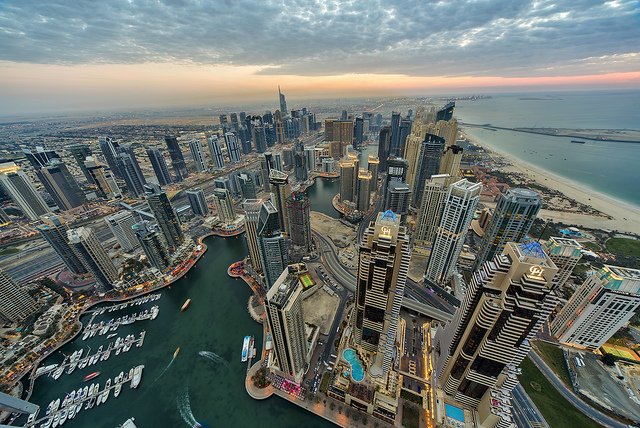Grade A locations rule UAE’s office space

Tenants who can afford it find comfort at blue-chip locations in Dubai and Abu Dhabi
bridge media | Men's Footwear
The UAE’s office property market — by far the best performing category during 2015 — could be in for a tighter run this year and brought on global and more regional factors.
It’s much more apparent in Abu Dhabi where “reduced oil prices, coupled with the government reallocating funds to deal with regional matters, has also led to a major reduction in government domestic spending — causing a contraction of the government sector and the pace of economic diversification,” said David Dudley, International Director and Head of Abu Dhabi Office at JLL.
But this does not necessarily mean the office market is going through a rental price correction.
“While demand has reduced, so has supply and therefore on balance, the market remains relatively stable, with some prime buildings experiencing an uplift in rents throughout the year,” said Dudley. (Grade A office rents in Abu Dhabi increased 7 per cent on an annualised basis.) Last year, Abu Dhabi saw the addition of “just” 146,000 square metres, thus increasing the overall stock to around 3.3 million square metres of gross leasable area. Projects delivered included Addax Tower on Reem Island and Irena HQ in Masdar City. Around 340,000 square metres is expected to enter the market through this year, ‘dominated by the delivery of Bloom Central and ADIB HQ on Airport Road, Al Hilal Bank HQ on Al Maryah Island and Adnoc HQ on the Corniche.
The fact that most of these are designated for use by the developing entity — or sizeable portions within — should mean less stock being added to the leasing market.
But ‘given lower demand from international corporates and government entities, Grade A rents are likely to remain stable in 2016,’ JLL reports. ‘While some progress is seen on the legislation governing the Abu Dhabi Global Marketplace (ADGM), it is likely that corporates with onshore activity will have to relocate, increasing vacancy rates on Sowwah Square and placing downward pressure on prime rents.’
In Dubai, owners of Grade A offices don’t have much to worry about. Ditto for the free zones, with DWTC District now occupying prime position in the bigger tenants’ radar. The likes of Tecom, JLT and Dubai Design District (d3) are also firm favourites, with d3 recently confirming that the publicly listed retail and entertainment services firm Marka will have its new headquarters there.
It is the same situation for blue-chip office buildings. ‘In Dubai, vacancies in selected Grade A buildings are now minimal, pushing rents up 4 per cent,’ according to the JLL report. ‘However, overall commercial activity remained subdued and corporate activity focused on consolidation of operations as opposed to expansion.
‘Meanwhile, rents in Grade B space (typically strata owned and located in less developed areas) continued to face downward pressure as supply outstrips demand in that segment. As more Grade A stock is delivered to the Dubai market over the next couple of years (e.g., Dubai Trade Center District/ICD Brookfield), rental rates across the Central Business District (CBD) are expected to remain flat.’
It will have consequences for the secondary locations, where current vacancy rates are currently at 19 per cent and ‘expected to increase’.
Dubai’s retail rentals could come under pressure
* With the volume and value of retail sales slowing down, ‘some retailers are struggling to meet the high rental rates imposed, and landlords are having to revise their contracts and offer flexible deals in order to retain tenants,’ according to the JLL report. ‘Rents in 2015 remained flat in both primary and secondary super regional malls in Dubai and are expected to decrease in 2016 as the market moves further in the favour of tenants.’
* In Abu Dhabi, ‘rents in the prime malls are expected to remain stable in the short term given the more limited existing stock of good quality malls, the high purchasing power among residents and less dependency on tourist spending. The addition of a number of quality new retail malls in 2017-2018 is however expected to exert downward pressure on the lower quality malls in the medium term.’
credit to Gulf News
